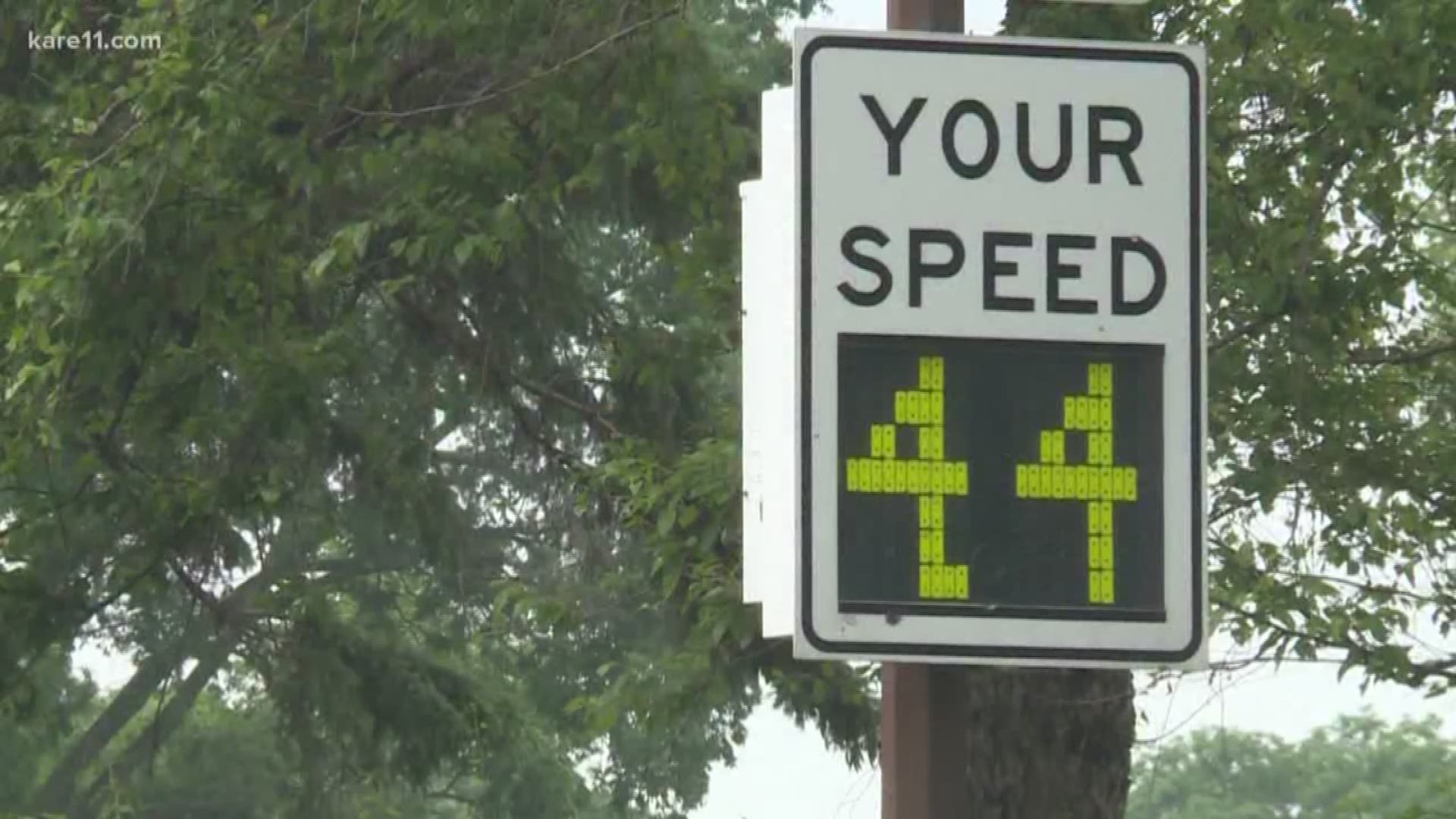ST. PAUL - Barb Thoman lives on a side street just four houses east of Cretin Avenue, a well-traveled thoroughfare that carries daily traffic from Interstate 94 toward the University of St. Thomas.
Drivers are supposed to abide by a 35 mile-per-hour speed limit, but that doesn't always happen. On a routine basis, Thoman notices cars zooming by at 40, 45 and even 50 mph.
The rule-breakers are captured red-handed on a roadside radar screen — and their high speeds can be dangerous.
"Yes, there are crashes that happen on this road," Thoman said. "Rear-end crashes, a lot."
It's not just anecdotal.
According to data provided to KARE 11 News by the St. Paul Police Department, 52 traffic accidents have occurred since June 2017 on a half-mile stretch of Cretin between Marshall Avenue and I-94, a pace of more than one per week. The department has also recorded five hit-and-run accidents and five injury accidents in the same 12-month span.
That's why Cretin Avenue and four other city streets in St. Paul have now been targeted for a speed limit reduction.
The city council on Wednesday approved lowering the speed limit from 35 mph to 30 mph on Cretin Avenue North extending south almost all the way to Marshall, putting this stretch of the road in line with the speed limit on the rest of Cretin. A neighborhood group Thoman works with, the Union Park District Council, has lobbied the city for years to make a change and officially recommended this move in April.
"I think it's a great idea," Thoman said.
Samantha Henningson, the council member representing Cretin Avenue North in Ward 4, said the new speed limit could save lives by slowing overall traffic. Her office provided data from an international agency showing that a pedestrian has an 85-percent chance of death when hit by a car at 40 mph, as opposed to a 45-percent chance of death when hit by a car at 30 mph.
"Because the speed limit is higher than most roads in the city, the chance for serious injury or fatality in that stretch is higher," Henningson said in an interview. "So let's just take that out of the equation."
The council's resolution also aims to create consistency on St. Paul's streets by lowering speed limits to 30 mph on roadways in Ward 2, including portions of Wabasha Street and Fillmore Street, among others.
"Let's just have everything be the same," Henningson said, "so people know what to expect."
Kevin Gutknecht, the communications director for the Minnesota Department of Transportation, said generally the state must approve any changes to speed limits on local roads. Upon the passage of a resolution such as the St. Paul City Council's, MnDOT would need to investigate and review traffic data before authorizing the municipality to post new speed limits.
A representative for the city council clarified on Wednesday afternoon that the city will need to notify MnDOT of its intention to change the speed limits. If the state does not object, however, the city plans to begin posting new 30 mph signs soon.
Henningson said lowering speed limits is only a short-term solution.
"Over time, we want to design streets differently, but that's a multi-million-dollar undertaking. So what are the things we can do in the near-term?" Henningson said. "I think the city has been focused on education, enforcement and encouragement."

